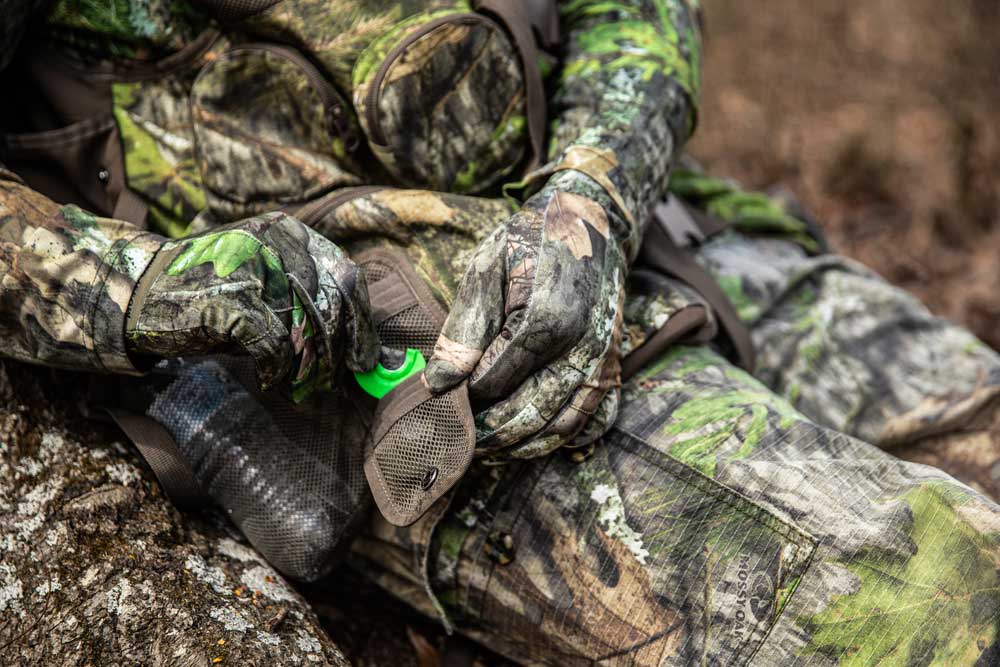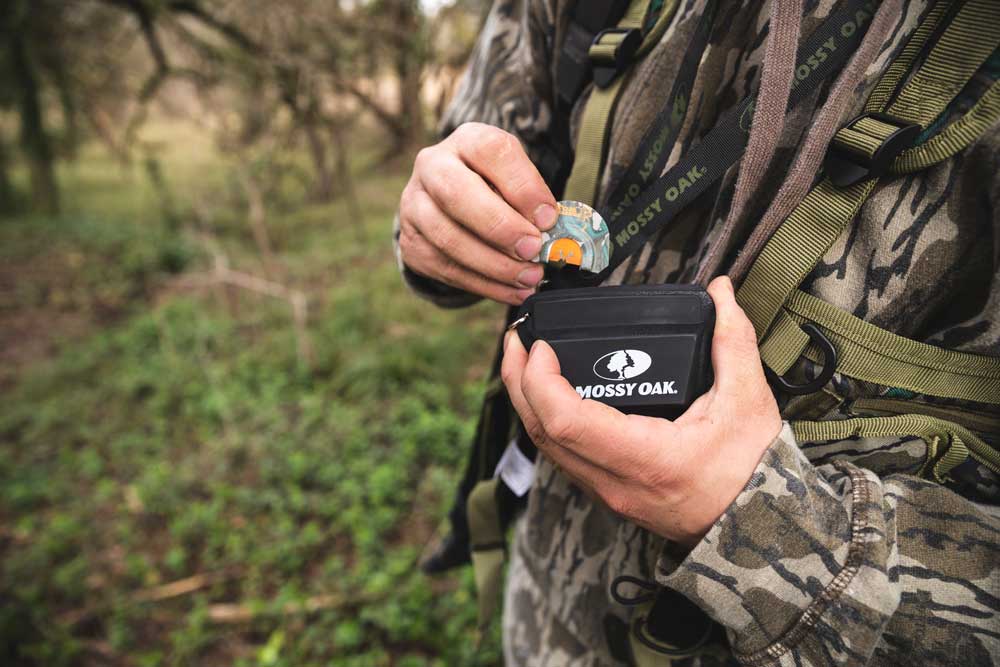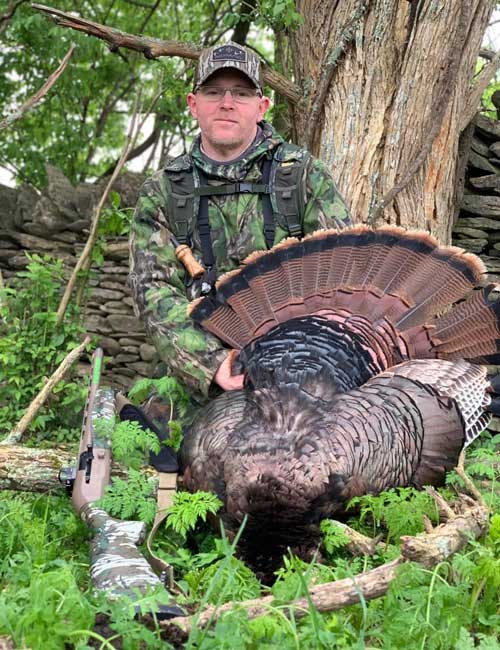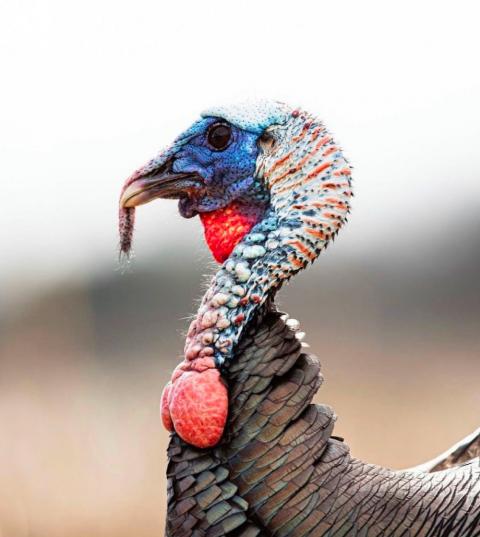Heath Wood
One of the most common questions among turkey hunters and callers is the correct usage of a diaphragm call and if there truly is an advantage to using one.

For many hunters, using a diaphragm call to mimic wild turkey sounds can be one of the most challenging tasks when learning how to call. A diaphragm call consists of a plastic or metal u-shape frame with two, three, or even four latex or prophylactic reeds stretched tight in the frame. A diaphragm is constructed by taking the u-shaped frame and reeds and then placing it between two pieces of tape that also are u-shaped to fit correctly in the roof of the hunter's mouth. Sound is made when air is blown over the top of the reed. By blowing different air pressures and using different shaped cuts in the latex, a hunter can make a wide variety of sounds from a turkey's vocabulary.
The biggest fear of beginning turkey callers is that they will choke on the call or swallow the call. After the gag reflexes have calmed down, the hunter can benefit with huge advantages while using a diaphragm when turkey hunting. To help understand the advantages of using a mouth call and how the hunter can get the most out of it, I recently sat down with three champion turkey callers and veteran turkey hunters to get their tips and advice on getting the most out of a diaphragm call this spring.
Adding Realism To Your Calling
Veteran turkey hunters agree that the most significant advantages of using a diaphragm call are keeping the hands free to use a friction call such as a slate or box call and staying on the gun when a turkey is within close range.

J.R. Lanham of Bunker, Missouri, has been turkey hunting for close to 30 years and says that the diaphragm call is the most versatile call available to turkey hunters. Lanham has signature calls from Rolling Thunder Game Calls and has won multiple turkeys calling titles. Titles include the U.S. Open Championship, Missouri State Championship, and Mid-American Open. He also has won the Grand National Championship and World Championship 3 times, respectively, and won the National Championship 6 times.
By spending multiple hours practicing for competitions, Lanham has learned that realism in calling is what helped him win multiple championships. That same realism can be achieved while hunting to help with success.
"Being a good-sounding turkey caller is 50 percent of what makes a successful hunter," said Lanham. "The other 50 percent of being a successful hunter is woodsmanship."
Lanham suggested that hunters practice their calling for 15 to 20 minutes a day in the days leading up to the hunting season.
"If a turkey hunter listens to what turkeys sound like and learns their cadence, they will sound like a real turkey. It doesn't matter how good you sound, more important is that you make the turkeys' sounds," Lanham added. He then went on to say that he has hunted with hunters who, up close, he says sounded awful, yet in the woods, they sounded exactly the way a hen turkey sounds because of having the right cadence.
How To Get Started

Billy Yargus of Ewing, Missouri, has won many turkeys calling titles. Yargus has won 3 Grand National championships, 7 Mid-American Open titles, 2 World Two-Man Championships, and the World Championship and U.S. Open Championship.
Yargus has turkey hunted for over 40 years. Most of that time, he has called with a diaphragm call.
"I started learning how to call with a diaphragm in 1977, and it has been my go-to call ever since," said Yargus. When I asked Yargus what calls a beginner turkey caller should use, he suggested a batwing-style call like he helps make for Woodhaven Custom Calls.
"The Woodhaven Venom or the Hammer T are two great calls to get started with," said Yargus. "These two calls are easy to use and easy for the hunter to achieve a raspy sound."

To get a higher pitch sound on a diaphragm call, the hunter must blow air over the right or left of the call. The Ninja Venom has both sides of the latex cut out with a V-shaped middle that helps produce a raspy sound by quickly blowing air over the middle, which Yargus said is the easiest for beginning callers.
Once a hunter learns how to use a diaphragm call properly, there are common mistakes that Yargus said hunters should avoid.
"The biggest mistake from new hunters is calling too loud," explained Yargus. "When a new caller or hunter is not confident about their calling abilities, they should call softer and let the gobbler come when he has committed to the call."
Yargus said to begin soft, then pick it up as you go to ensure that a beginning diaphragm caller is calling correctly.
Practice Makes Purr-Fect

"Sounding like a real turkey when using a diaphragm call is self-rewarding, "said Jesse Martin of Mt. Sterling, Kentucky. Martin, who hunts for Dead End Game Calls, has been turkey hunting for 27 years. Although Martin is a seasoned turkey hunter, he is best known for his real calling, earning multiple calling titles. Martin's titles include 6 Grand National Championships, U.S. Open Championships, World Championships, 30 State Championships from various states, and 15 Kentucky State titles.
To compete in a high level of competition, Martin said he practices every day. "When I am in the truck, or at home, working or whatever, I have a diaphragm call in my mouth practicing every day."
The hunter does not have to be a championship caller to successfully call turkeys with a diaphragm. However, Martin said it does help to sound as much like a real turkey as you can. "Today's hunters have access to YouTube, videos, and much more to learn what real turkeys sound like and how to imitate those sounds on a diaphragm call."
Check out our playlist of the different sub-species of wild turkeys gobbling!
Even though you may not be competing in a competition, Martin said it is vital for hunters to stay polished on their calling by practicing 4 to 5 hours a month for the entire year.
"The biggest advantages to diaphragm calls are being hands-free, sounding realistic, and having the ability to sound like more than one turkey," He noted.
Martin suggested that hunters find the right call to produce a variety of turkey vocals and practice all year with that call to sound like a real hen when the season arrives.




























